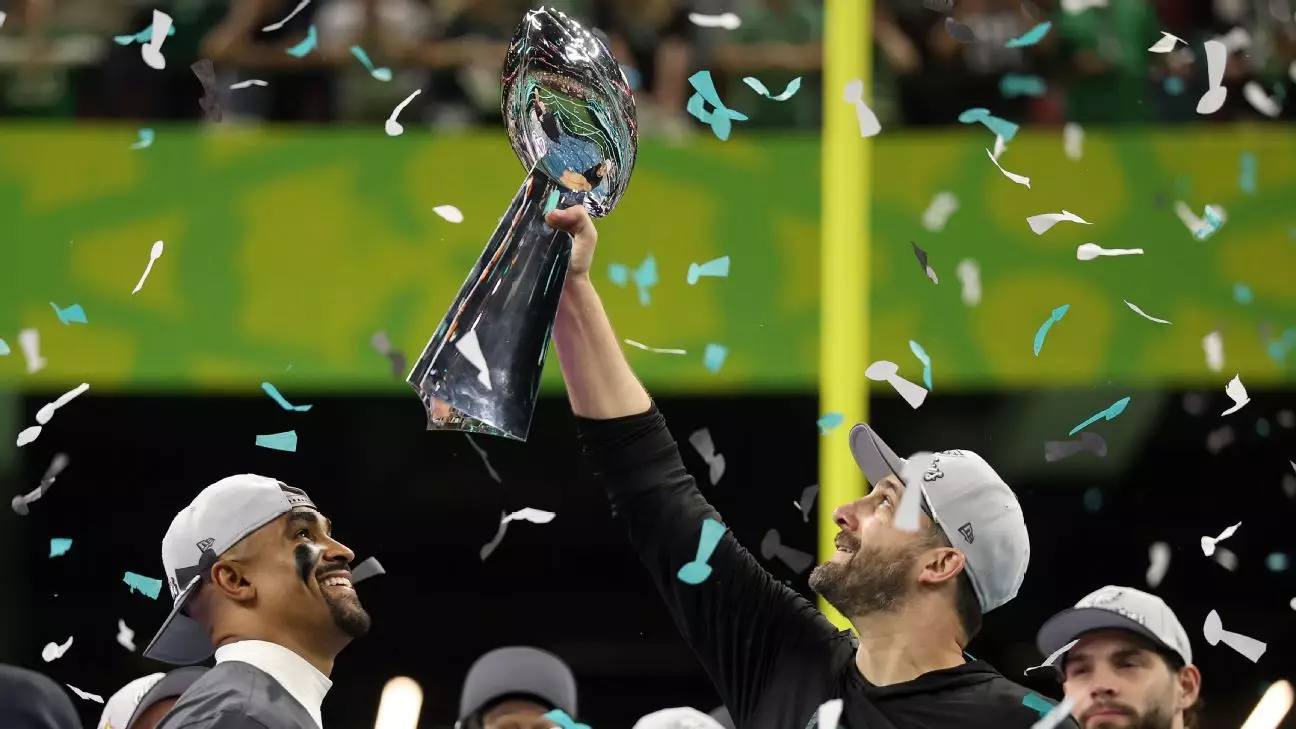Fox Sports has recently projected astonishing viewership numbers for the Super Bowl, with an average audience estimated at a staggering 126 million U.S. viewers. This remarkable statistic highlights not only the enduring popularity of American football but also the expanding landscape of media consumption as the Super Bowl attracts viewers from various platforms, including traditional television and streaming services. The Philadelphia Eagles’ impressive 40-22 victory over the Kansas City Chiefs was aired through a variety of channels, demonstrating the multifaceted ways in which audiences engage with live sports today. With coverage on Fox, Fox Deportes, Telemundo, and a free stream on Tubi, it’s clear that the NFL is adapting to the evolving viewer demographic.
One of the key factors contributing to this growth in viewership is the updated methodology of measurement. For the first time, Nielsen has expanded its audience counting to include out-of-home viewers across nearly all states, excluding only Hawaii and Alaska. This change significantly enhances the accuracy of the data, particularly when considering the increasing trend of group viewings in public settings like bars and restaurants. By incorporating data from smart TVs and digital platforms, the NFL can boast more comprehensive statistics reflecting the true scope of its audience. Such adjustments have become necessary as media consumption habits shift, particularly with younger generations increasingly opting for streaming alternatives over cable.
Unlike previous Super Bowls that were characterized by nail-biting finishes, this year’s matchup was distinctly one-sided early on. The Eagles established a formidable 24-0 lead in the first half, ultimately securing their victory and altering the narrative of the game significantly. This year followed two consecutive Super Bowls that delivered intense finishes, raising the question of whether a one-sided game might affect viewer retention. However, the initial trends suggest that the lure of the event transcends game competitiveness; viewers are captivated by the spectacle, the halftime show, and the commercials, making the Super Bowl a cultural event rather than just a sporting contest.
The presence of high-profile attendees such as former President Donald Trump and global pop star Taylor Swift added an extra layer of intrigue and allure to the Super Bowl. Trump’s historic attendance as the first sitting president at this cherished event and Swift’s connection to Chiefs tight end Travis Kelce drew significant attention from various demographic segments. This phenomenon underscores the NFL’s unique position at the intersection of politics, entertainment, and sports, where celebrity appearances can further amplify viewership and engagement.
With the latest Super Bowl marking the third consecutive year in which over 100 million viewers tuned in, the NFL appears to be regaining momentum after a sluggish period characterized by declining ratings amid the rise of cord-cutting. Interestingly, the NFL playoffs reported 35.2 million viewers across the initial three weekends of competition, a statistic that, while lower than the previous year’s record, still reflects significant interest. As viewing habits continue to evolve, the NFL’s ability to innovate and adapt its broadcasting strategies will be imperative in maintaining and potentially expanding its colossal fanbase.
The ongoing growth of Super Bowl viewership serves as a testament to the resilience of the NFL as a cultural institution in America, proving that, regardless of individual game outcomes, the allure of the Super Bowl remains unmatched.

